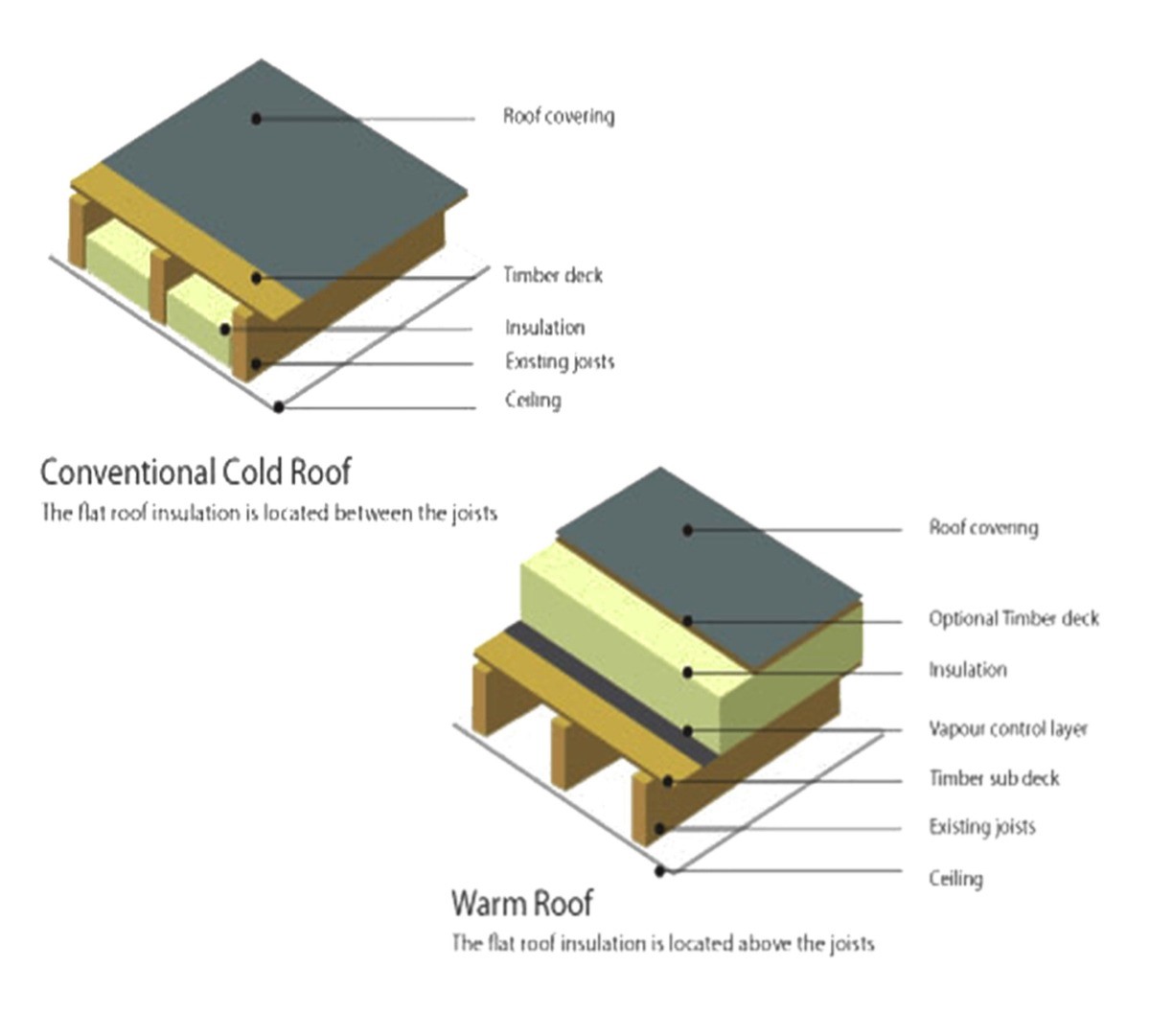

Flat roofs are a popular choice for commercial and residential buildings due to their versatility and cost-effectiveness. However, not all flat roofs are created equal. There are two main types of flat roof systems: warm deck roofs and cold deck roofs.
Warm Deck Roofs
A warm deck roof, also known as a compact roof, is a type of flat roof where the insulation is installed above the structural deck. This design allows the deck to remain warm, which can help prevent condensation build-up and moisture-related issues. Warm deck roofs are often preferred in colder climates because they provide better thermal performance and energy efficiency.
Cold Deck Roofs
In contrast, a cold deck roof, or a conventional roof, has the insulation installed below the structural deck. This means that the deck remains exposed to the elements, making it more susceptible to temperature fluctuations and potential condensation problems. Cold deck roofs are typically more affordable than warm deck roofs but may require additional measures to ensure proper insulation and moisture control.

Common Flat Roof Issues
While flat roofs offer several benefits, they are also prone to certain problems if not properly designed, installed, and maintained. Some of the most common flat roof issues include:
- Ponding Water One of the biggest challenges with flat roofs is the potential for ponding water, which occurs when water accumulates on the roof surface and fails to drain properly. Ponding water can lead to leaks, structural damage, and accelerated deterioration of the roofing materials.
- Shrinkage and Cracking Over time, flat roof membranes can shrink or crack due to exposure to UV radiation, temperature fluctuations, and other environmental factors. These cracks and splits can create entry points for water, leading to leaks and potential interior damage.
- Flashing Failures Flashing, which is the material used to seal roof edges, penetrations, and transitions, is crucial for preventing water intrusion. However, if the flashing is improperly installed or becomes damaged, it can create vulnerabilities and lead to leaks.
- Vegetation Growth Flat roofs can be susceptible to vegetation growth, particularly in areas where standing water or moisture accumulates. Roots from plants and vegetation can penetrate the roofing membrane, causing damage and potentially leading to leaks.
- Inadequate Drainage Proper drainage is essential for flat roofs to prevent water accumulation and potential damage. If the drainage system is clogged, damaged, or inadequately designed, it can lead to ponding water and increased risk of leaks and other issues.
Addressing Flat Roof Problems
To ensure the longevity and performance of your flat roof, it’s essential to address any issues promptly. Regular inspections, proper maintenance, and timely repairs can help prevent minor problems from escalating into major issues. Additionally, working with experienced roofing professionals who understand the unique challenges of flat roofs can help ensure that your roof is designed, installed, and maintained correctly.
DISCLAIMER: This article is for general information only and not intended as advice. Each project has its own set of unique circumstances, all potential issues should be investigated by a surveyor on a case by case basis before making any decision.



